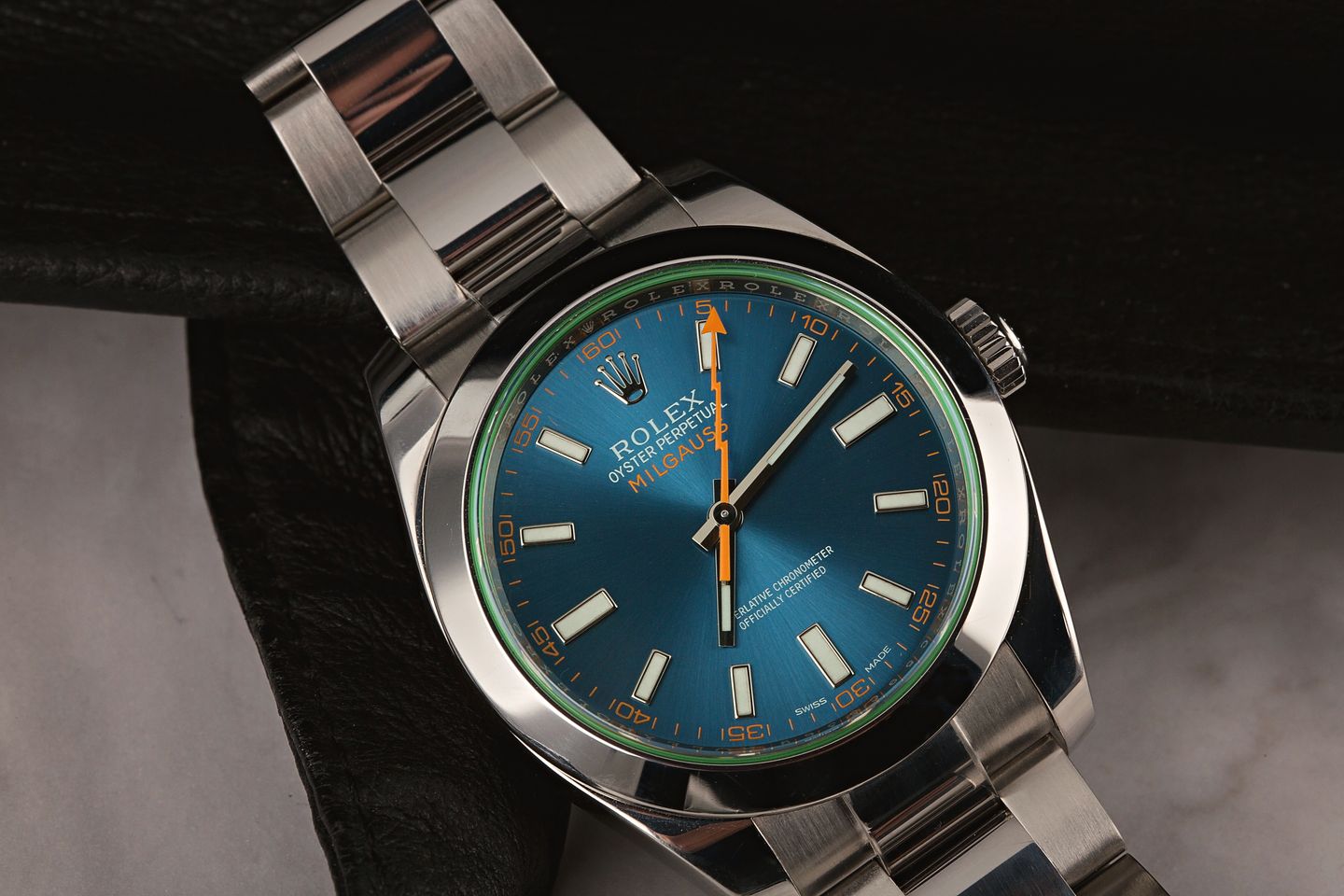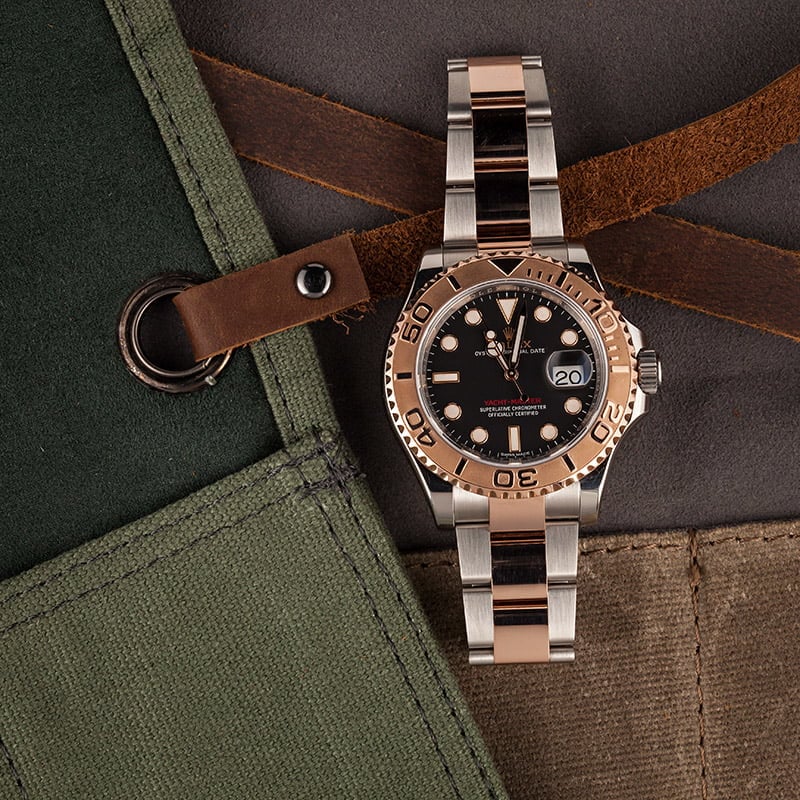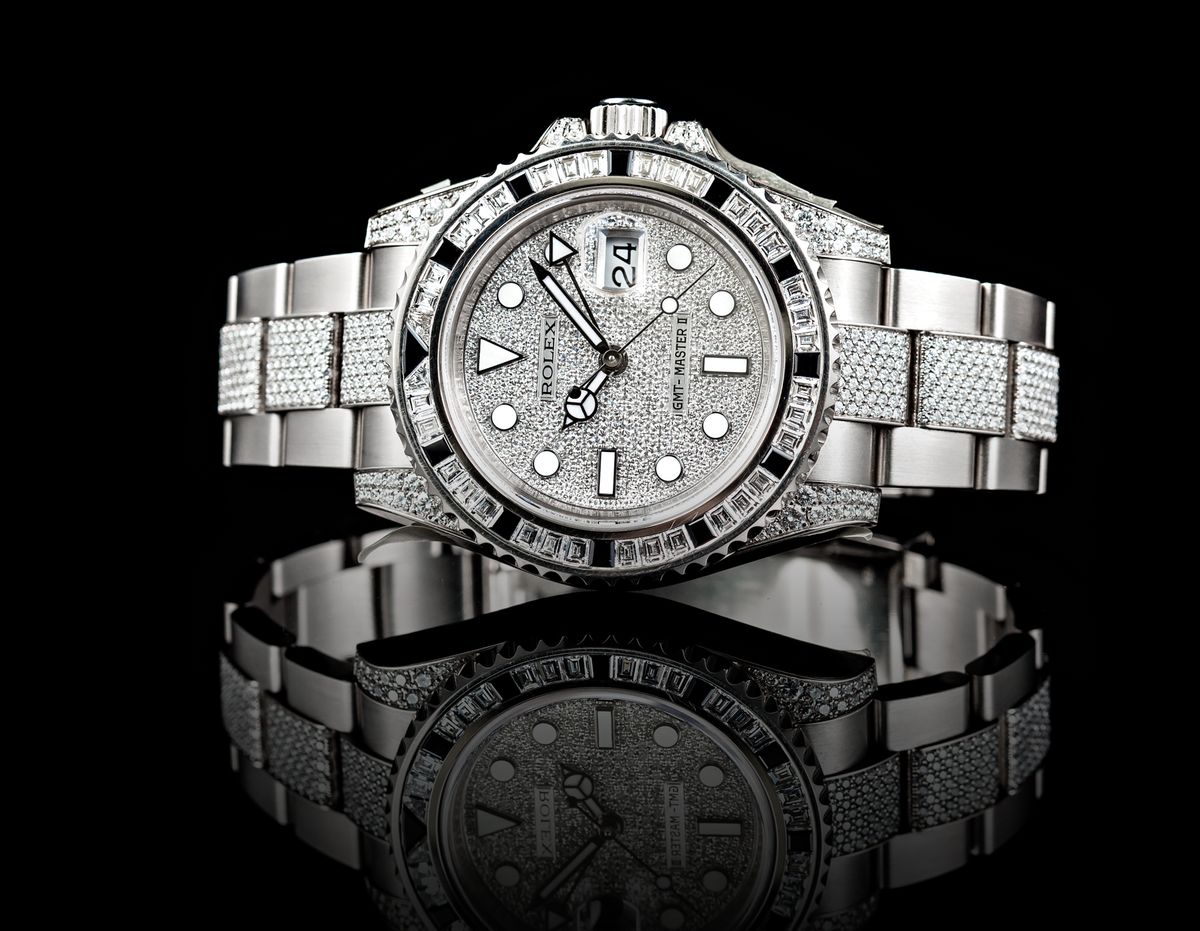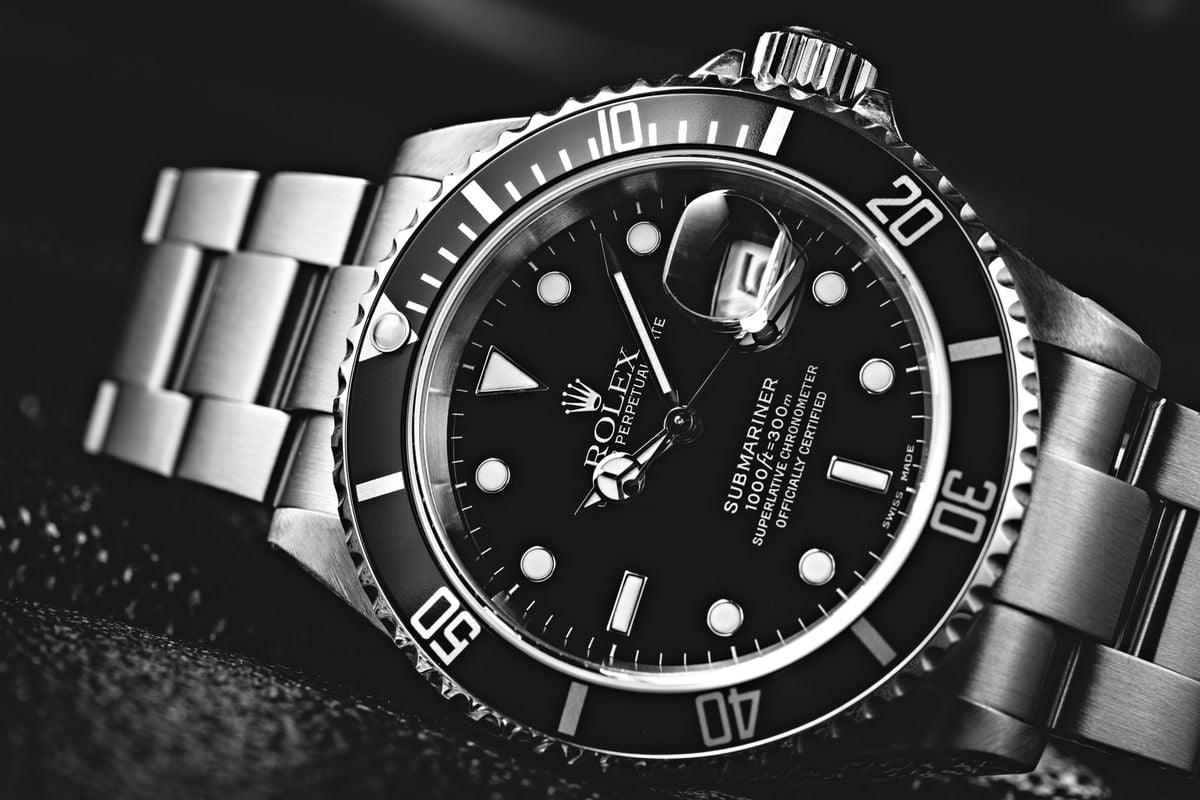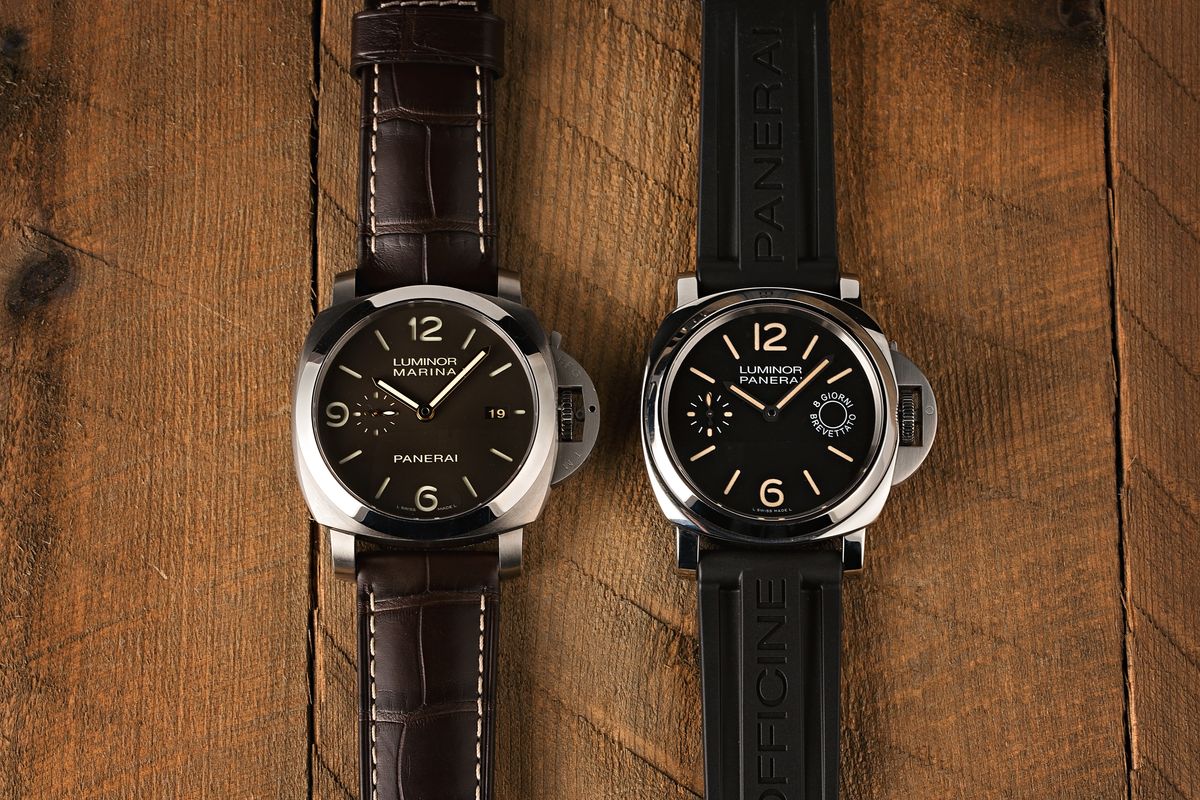Is the Rolex Milgauss a Sports watch?
If you take a look at Rolex’s website, you will notice its entire portfolio is divided into two main categories; the Classic Collection and the Professional Collection. On the surface of it, it couldn’t really be any more simple. The Classic category contains the Day-Date, Datejust, Oyster Perpetual, Sky-Dweller, and the entire Cellini range – those models you would describe as dress watches. In the Professional Collection, you mostly have the pieces Rolex originally conceived to aid people in doing a job. The Submariner was for divers. The Sea-Dweller was for deeper divers. The GMT-Master was built for transcontinental pilots and the Explorer was for, well…you know.
However, over the years things have changed. Unofficial terms like “sports watch” and “tool watch” are now used interchangeably to describe the Professional models, no matter whether or not they are entirely accurate. For pieces such as the Submariner, Daytona, or Yacht-Master, for example, they could conceivably be labeled as both ‘sporty’ and ‘tool-like’ since they were all made to help in a particular and specific activity. But for something like the Rolex Milgauss, are those designations correct?
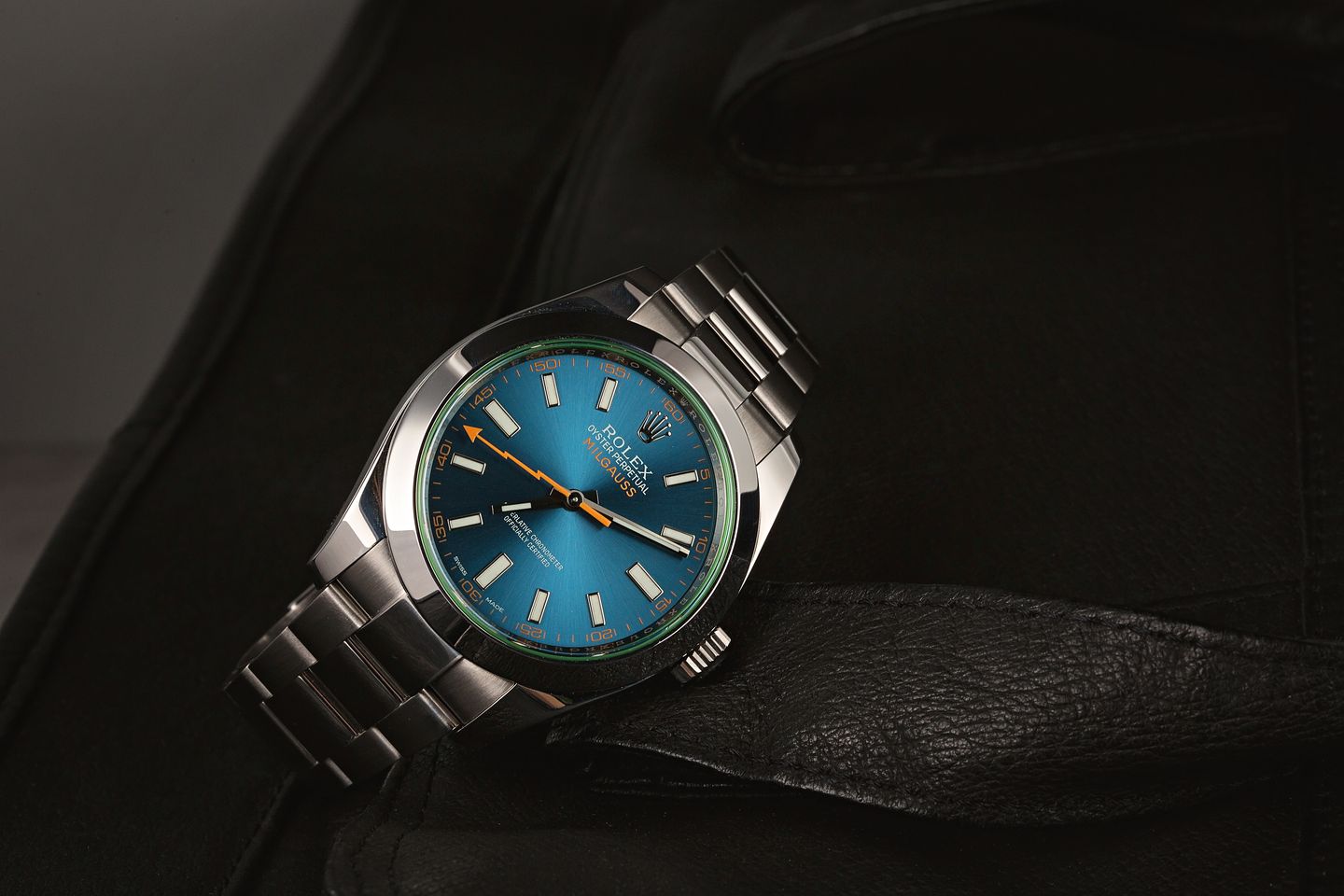
The Rolex Milgauss
The debut Milgauss reference emerged in 1956, during Rolex’s first great golden age. It was introduced, like most of the brand’s innovations in the 50s, to solve a problem. Technology during that time was advancing at a breakneck pace and the abundance of new equipment being devised had created a never-before-seen challenge; electromagnetic fields.
Even standing in the presence of a minor magnetic force, such as what you would get from a hairdryer or TV, could be enough to affect a traditional mechanical watch. The movement’s balance spring, a long, flat coil of wire that controls the frequency of the balance wheel’s movement, would stick to itself, essentially making it shorter and causing the watch to run fast. Additionally, the steel parts would retain the magnetism even after leaving the environment, creating their own fields and impacting timekeeping thereafter. The watch would then have to be demagnetized before it could be expected to run properly again.
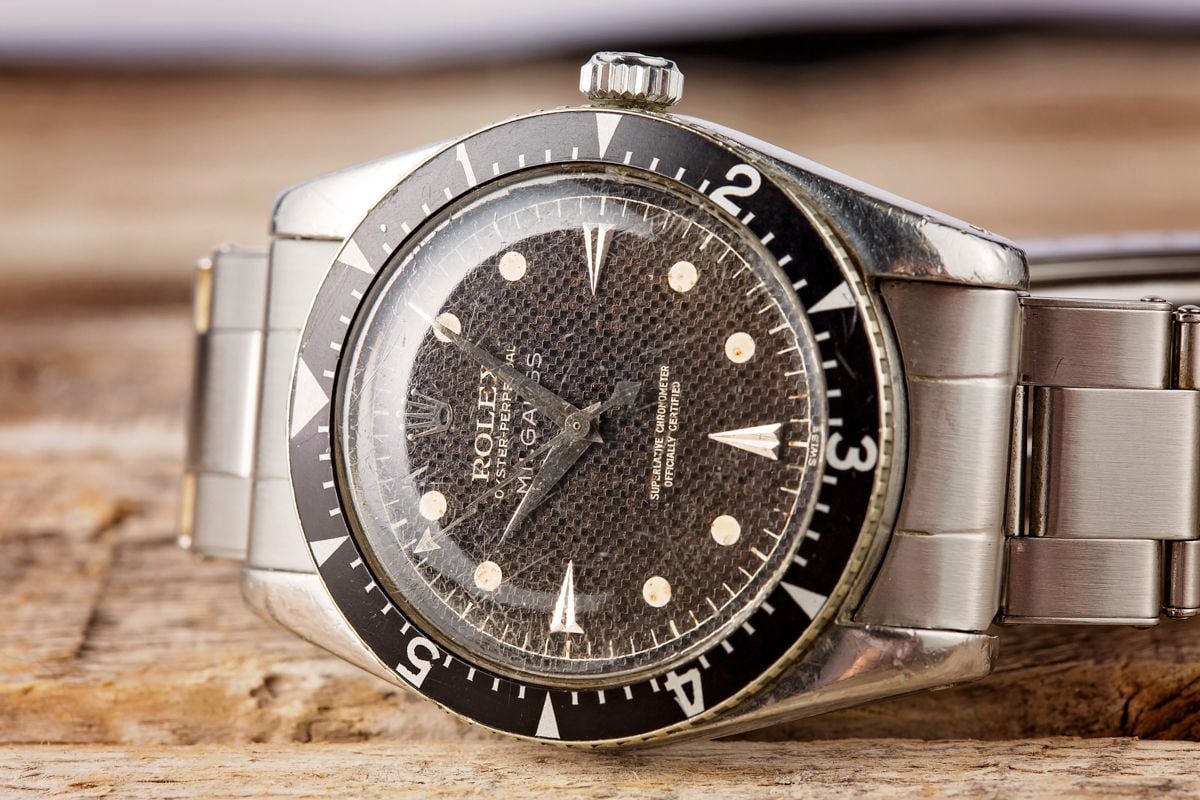
But for those scientists and technicians working in cutting-edge labs, with the likes of MRI machines or X-ray scanners, the fields were obviously far stronger and were sometimes enough to even warp components completely, effectively destroying the watch. To combat the issue, Rolex introduced the Milgauss ref. 6543 (quickly replaced by the ref. 6541) – a 38mm steel watch that contained its own Faraday cage, made up of a second internal case topped by a soft iron honeycomb dial. Together, they shielded the movement from the harmful effects of magnetism, up to a strength of 1,000 (or mille in French) gauss, the unit of magnetic flux density.
Although the earliest versions of the Rolex Milgaus (the ref. 6543 and ref. 6541) were almost dead ringers for the recently released Submariner, even down to the black rotating bezel, they can’t legitimately be called sports watches. ‘Professional’, certainly; ‘tool’, yes. But science isn’t a sport, and that was the market the Milgauss was aimed at.
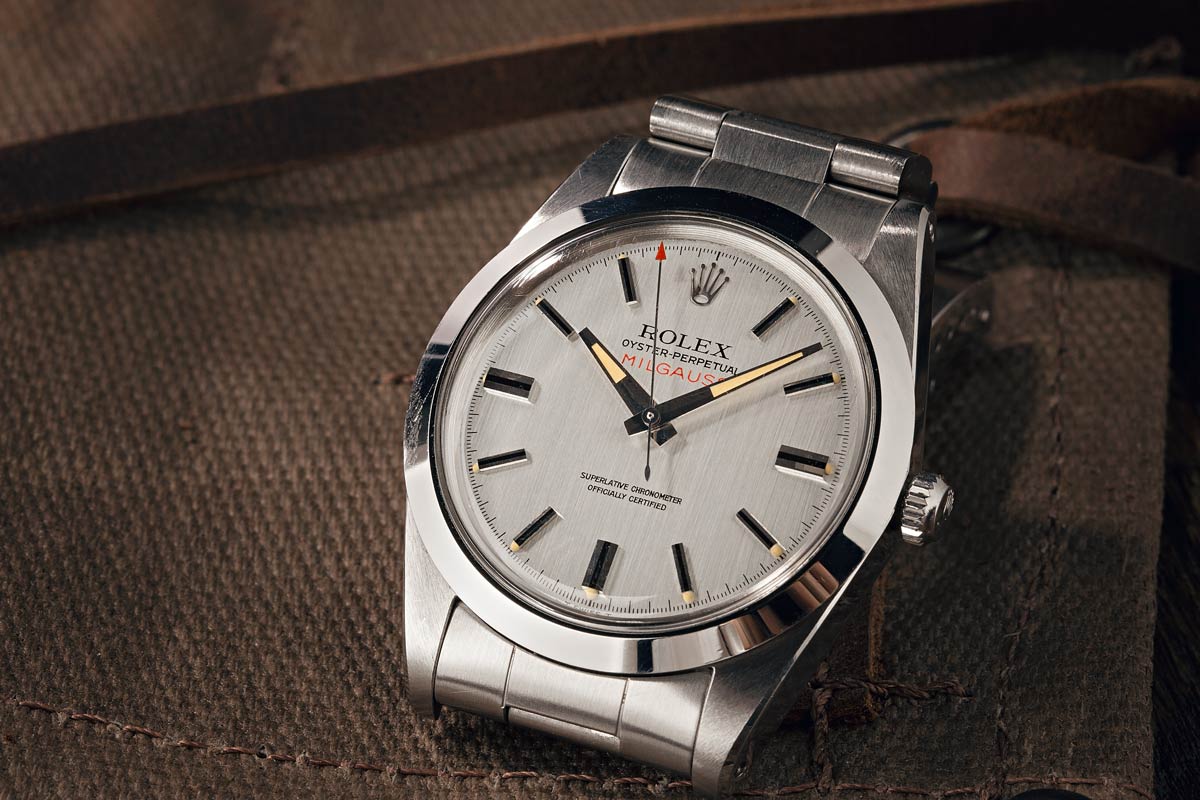
The Contemporary Rolex Milgauss
There are several watches in the Rolex lineup that tend to be looked at as second-tier models – those that never really reached the same heights of popularity as the household names – and the Milgauss has always been among them. It found its own aesthetic identity in its third generation, the ref. 1019 from 1960, a reference that stayed in production for 28-years. But that was also the one that took the Rolex Milgauss up to its retirement in 1988, with the brand deciding to cut its losses with the piece due to underwhelming sales.
Yet, to many people’s surprise, 2007 saw the antimagnetic watch make a comeback when Rolex released an entirely new version to coincide with the completion of the Large Hadron Collider at CERN. The Rolex Milgauss ref. 116600 introduced a new 40mm case to the watch (still retaining its internal antimagnetic shield) and internally, it received a new movement – the Cal. 3131, which features a number of naturally antimagnetic parts, such as Rolex’s own blue Parachrom hairspring.
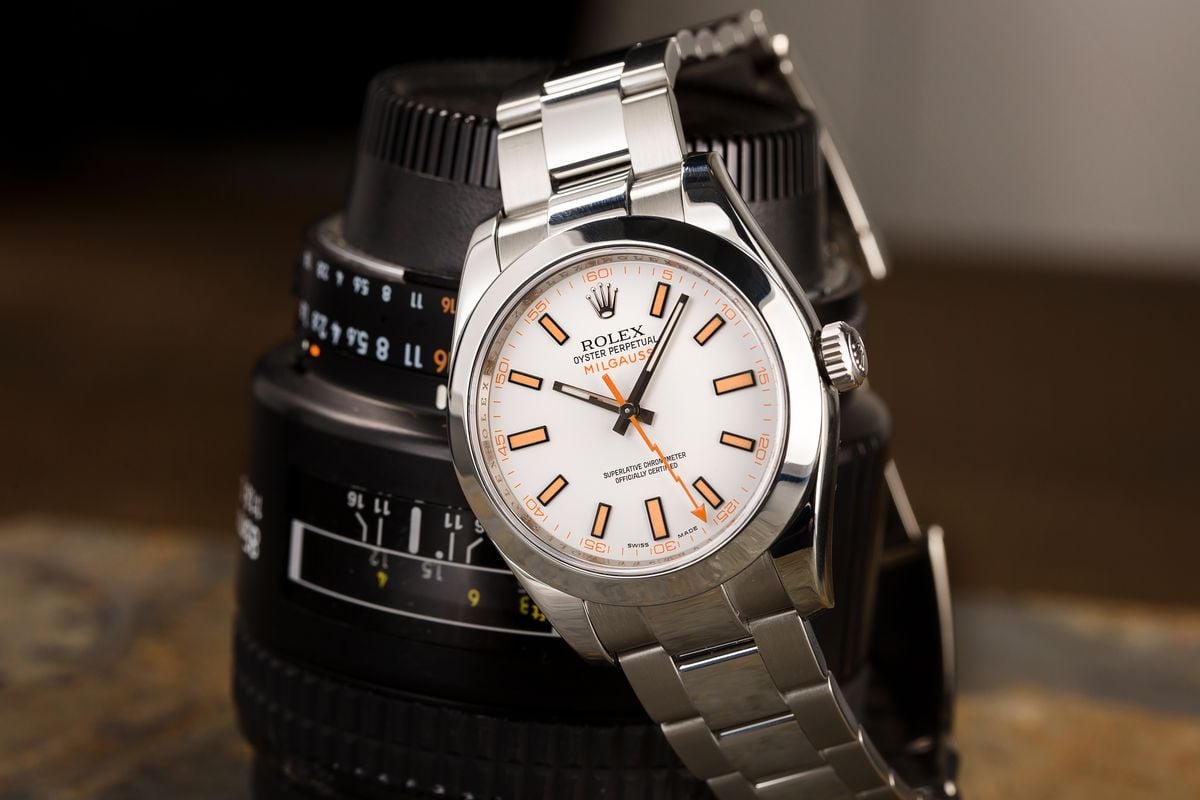
Additionally, it was given some unique design quirks. The lightning bolt seconds hand, a throwback to the second generation ref. 6541, made a welcome return, this time painted bright orange. The original trio of models on offer featured black and white dial versions, in addition to a second black dialed piece with a revolutionary type of sapphire crystal. The crystal in the ref. 116600GV (standing for Glace Verte) was given a distinctive green tint, in a process reportedly so complex that even Rolex hasn’t bothered to patent it.
Several years later, the standard white dial and black dial variants with clear crystals were discontinued and replaced with the Z-Blue dial, with a face of sunburst teal and covered with the same green sapphire. Altogether, it gave the Rolex Milgauss a new lease on life, becoming more sought after than ever before. It is also one of the most colorful watches in the lineup – so is it now a sports model?
Well, again no. It is, without a doubt, sporty-looking, and even with all its internal antimagnetic armor, the Milgauss is still a piece directly targeted at scientists and engineers doing their jobs.
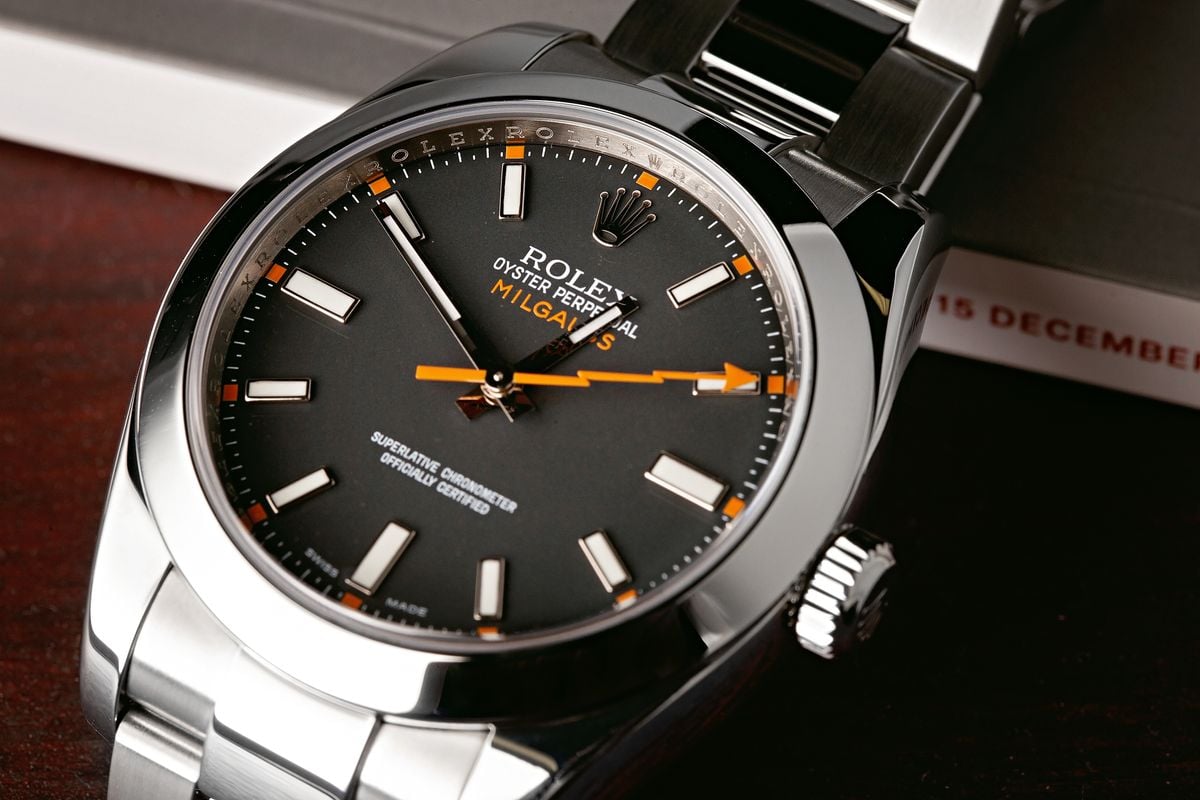
The Problem With Labels
Of course, there’s no need to take the categorization of Rolex watches too seriously. Even though the Milgauss is in the brand’s Professional Collection, there are some that suggest that because its steel case is polished rather than brushed, and because it has stick hands instead of the Mercedes-style like the other ‘tool’ models, it actually belongs in the Classic Collection.
However, the Daytona also has stick hands and a polished case, and yet no one suggests that it’s a dress watch. Plus, traditionally more formal pieces such as the Datejust (and to a lesser extent, the Day-Date) can likewise look especially sporty in some of their many extensive configurations.
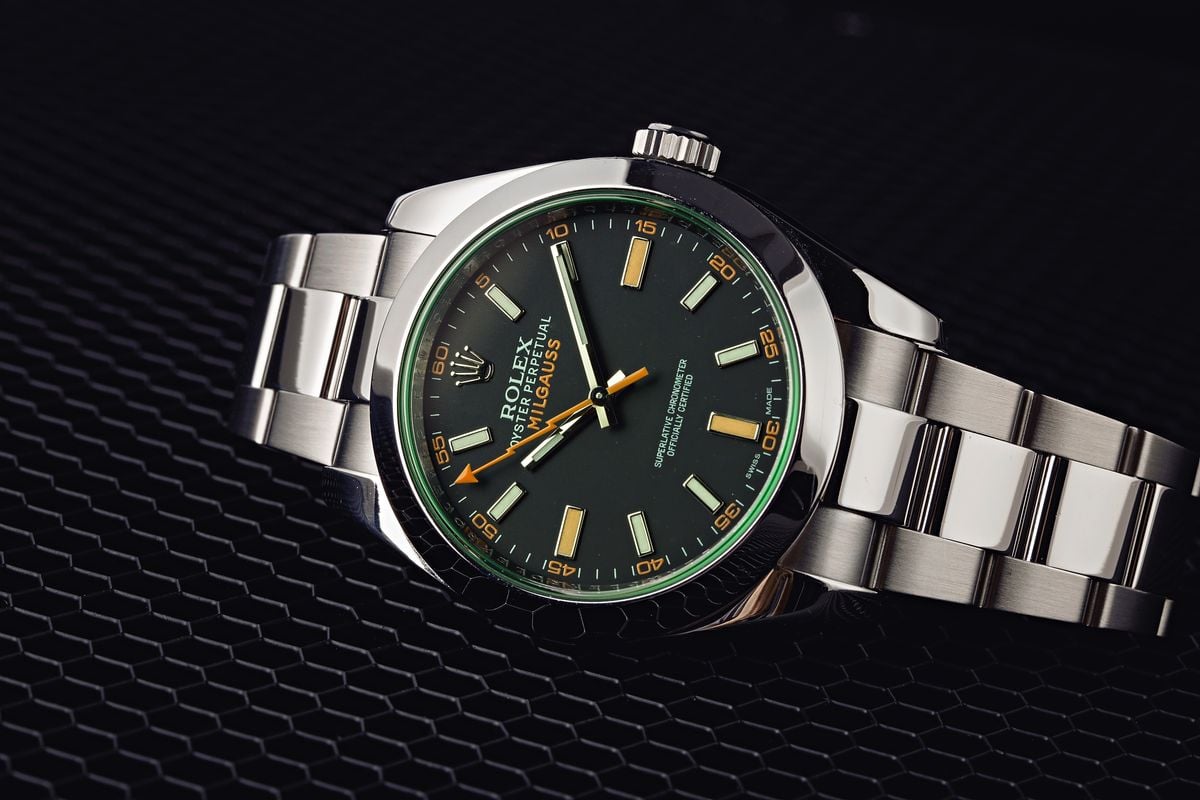
With Rolex, one of the great bonuses is the all-round versatility that exists within many of its watch collections. You can wear a Submariner with a tuxedo or a Datejust with a t-shirt and jeans, and neither will look out of place. The Milgauss, while it was primarily designed to withstand the huge magnetic fields of a hospital or laboratory, is still smart and stylish enough to wear in just about any situation.
Whether you go for a current model or a vintage piece, the exceptional adaptability of the Rolex Milgauss means that you will never be under or overdressed.
